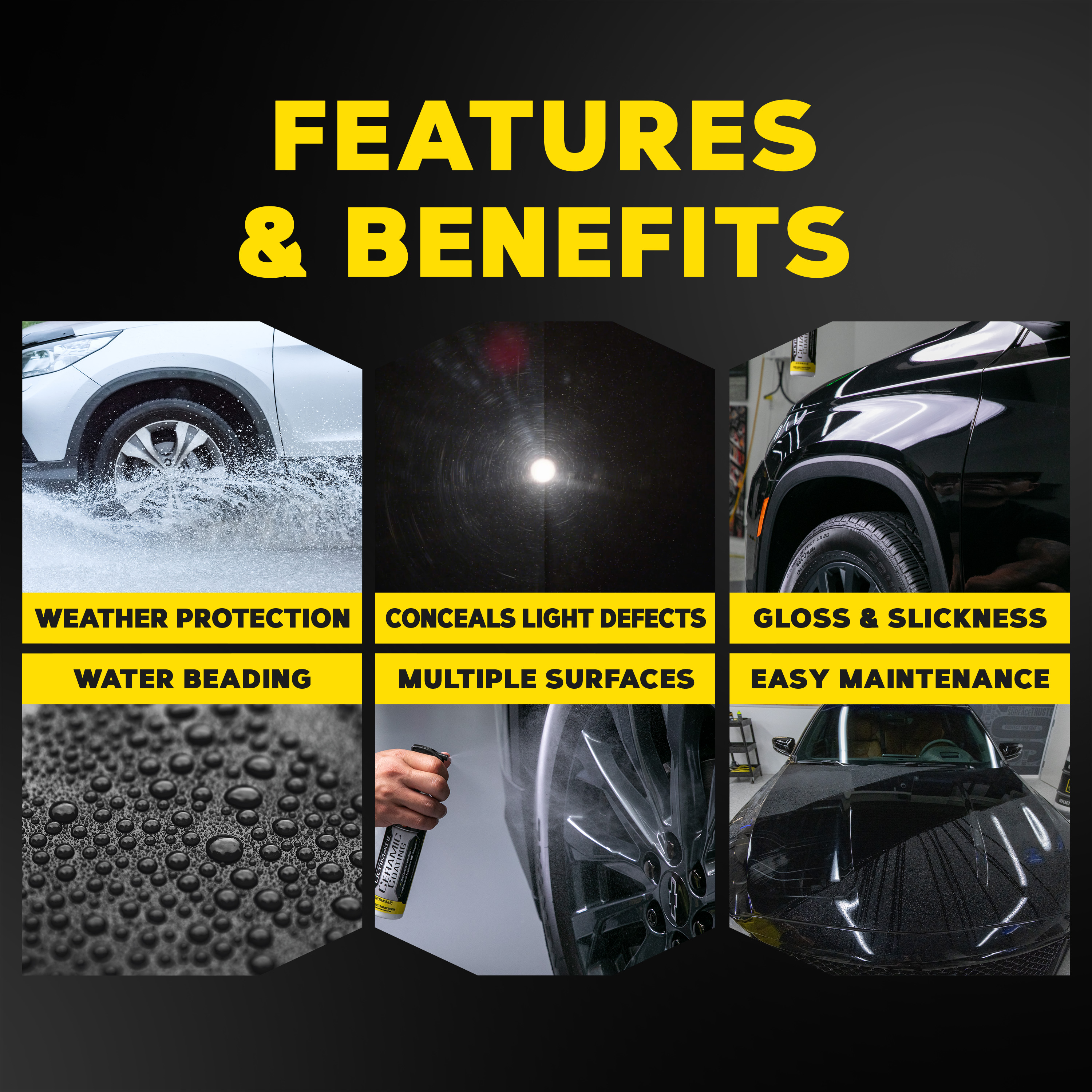Why Ceramic Covering Is the Ultimate Service for a Flawless Finish
Ceramic finish has arised as a leading remedy for those seeking a perfect coating for their vehicles, many thanks to its impressive durability and safety features. What elements truly established ceramic layer apart?
What Is Ceramic Layer?

When used appropriately, ceramic coating produces a hydrophobic surface that drives away water and dust, making it simpler to clean and maintain. Unlike traditional waxes or sealants, which usually use temporary security, ceramic finishes can last for several years, depending upon the item top quality and application technique. The process of applying ceramic covering needs thorough prep work, consisting of extensive cleansing and occasionally repaint correction, to guarantee ideal bonding and efficiency.
Ceramic coatings are not restricted to automotive surface areas; they can likewise be used on numerous products, including glass, metal, and plastics, offering a versatile remedy for enhancing protection. Overall, ceramic covering represents a substantial innovation in surface defense innovation, combining both useful and visual benefits for a vast array of applications.
Advantages of Ceramic Coating
While several surface area protection choices exist, the advantages of ceramic covering stand out due to its distinct homes and resilient efficiency. One of the key benefits is its exceptional resilience. Ceramic Coating Philadelphia. Unlike conventional wax or sealers that require constant reapplication, ceramic layers provide a resistant layer that can last for a number of years, considerably minimizing maintenance efforts
Another remarkable benefit is boosted security against ecological impurities. Ceramic coverings create a hydrophobic surface that drives away water, dirt, and numerous pollutants, making it much easier to clean. This feature not just preserves the automobile's appearance but also lessens the risk of deterioration and oxidation, particularly in rough weather.
Moreover, ceramic finishings use remarkable resistance to UV rays, protecting against fading and deterioration of paint with time. This UV security is crucial for keeping the aesthetic value of lorries and surfaces subjected to direct sunlight.
Additionally, the glossy coating achieved with ceramic finishing boosts the overall aesthetic appeal, providing surface areas a showroom-quality shine. Overall, ceramic finishes represent a considerable advancement in surface area defense technology, offering long-lasting benefits that deal with both visual and useful needs.
How It Works
Understanding the science behind ceramic coatings reveals just how they supply such amazing protection and longevity. At its core, a ceramic covering is a fluid polymer that chemically bonds with the vehicle's factory paint. This bonding produces a protective layer that is both hydrophobic and oleophobic, repelling water, dirt, and oil. The primary part of the majority of ceramic finishings is silicon dioxide (SiO2), which is derived from quartz. This substance contributes to the covering's firmness and resistance to scratches, UV rays, and ecological contaminants.
The application procedure involves numerous steps, including surface preparation, which is essential to Full Report achieving optimum adhesion. Once applied, the covering undergoes a healing process, throughout which it hardens and develops a semi-permanent bond with the paint surface area. This bond is what differentiates ceramic layers from typical waxes and sealants, supplying a longer-lasting protective barrier that can endure for several years.
Furthermore, the density of the layer can enhance its protective qualities, making sure that it can withstand severe problems. Inevitably, the science of ceramic layers incorporates innovative products with cutting-edge application strategies to supply an unrivaled level of security and visual enhancement for cars.
Contrast With Conventional Methods
The benefits of ceramic coatings become especially obvious when contrasted to typical paint defense techniques such as sealants and waxes. While waxes use a momentary luster, typically lasting a couple of weeks to a number of months, ceramic coverings offer a long-lasting protective layer that can i was reading this withstand for a number of years. This toughness significantly reduces the frequency of reapplication, making ceramic coverings an extra economical solution with time.
Additionally, standard approaches typically require considerable preparation and numerous applications to attain an adequate level of protection. In contrast, ceramic coverings bond at a molecular level with the automobile's surface, creating a robust guard versus ecological impurities like UV rays, acid rain, and road salts. This bond boosts the vehicle's resistance to scrapes and swirl marks, which prevail with typical waxes and sealers.
In addition, the hydrophobic homes of ceramic finishings drive away water and dirt, bring about simpler cleansing and maintenance. On the other hand, wax and sealant-treated surfaces can bring in crud, demanding even more frequent washing - Ceramic Coating Philadelphia. On the whole, ceramic layers not just provide superior security however likewise supply a more visually appealing and enduring surface, developing them as the preferred selection for discerning automobile proprietors
Application and Upkeep Tips

Utilizing a foam applicator, apply the finish in small sections, complying with the producer's guidelines pertaining to density and overlap. Enable sufficient healing time between layers, normally 1 day, to make certain appropriate bonding. After application, it useful link is vital to avoid direct exposure to water or extreme elements for a minimum of a week to allow the layer to fully heal.
Furthermore, utilizing a ceramic upkeep spray can boost the coating's hydrophobic residential properties and longevity. Regular evaluations for any type of indicators of wear will certainly help preserve the covering's integrity and protect that immaculate coating.
Final Thought
In verdict, ceramic coating arises as a premium option for achieving a flawless automotive finish. By forming a robust bond with manufacturing facility paint, ceramic finishing properly guards against scrapes, UV rays, and ecological impurities.
